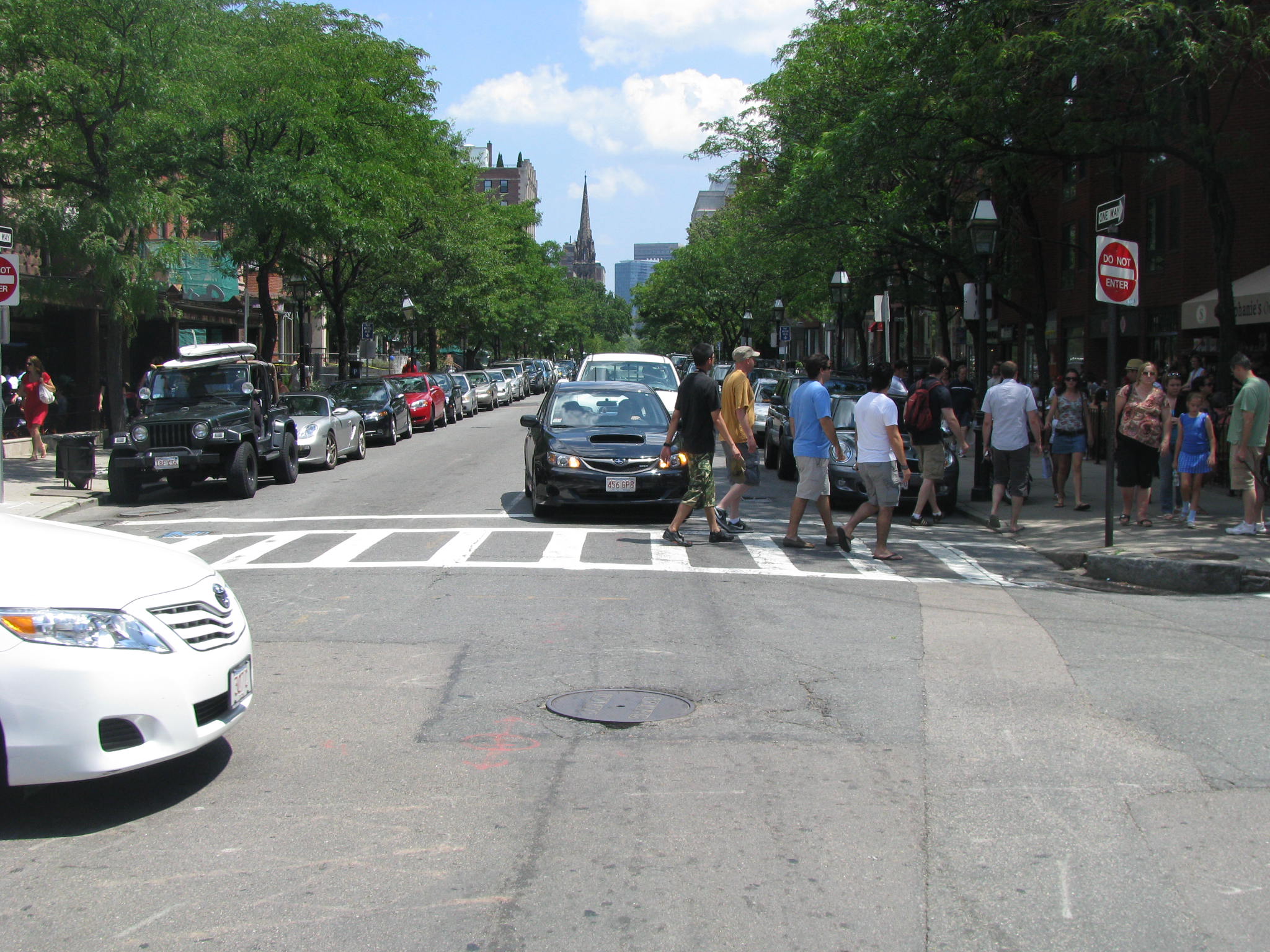 After a recent crash involving a cyclist and a driver, some digital speed monitoring devices (those signs that flash your speed to tell you how fast you are going) were installed on either side of a school on Clover on the stretch between East Ave and Monroe. This lovely stretch of road makes me go on a “why are there no sidewalks” bender every time I traverse it by foot, bike or car. There is a digital speed display sign around the corner on Elmwood just before the on-ramp to 495 and it makes me keep my speed in check every time.
After a recent crash involving a cyclist and a driver, some digital speed monitoring devices (those signs that flash your speed to tell you how fast you are going) were installed on either side of a school on Clover on the stretch between East Ave and Monroe. This lovely stretch of road makes me go on a “why are there no sidewalks” bender every time I traverse it by foot, bike or car. There is a digital speed display sign around the corner on Elmwood just before the on-ramp to 495 and it makes me keep my speed in check every time.
With all the feedback we’ve received about the red light camera program, I have been curious to look at other measures that cities use to make drivers mindful of their speed and help make streets safer for all who traverse them. Digital speed signs are one of those measures. Cities deploy them in both temporary and permanent ways. The research indicates they are more effective on streets with slower speed limits (40mph or less) and when they are not deployed all the time. They cost less than other physical design changes and non-physical measures (cameras, police enforcement), but rely on the driver to change behavior with simply a reminder.
These digital speed monitoring devices don’t take a picture, sound an alarm or alert the police. But they give immediate feedback to the driver in a way he/she doesn’t expect (unlike the speedometer, which predictably provides that same information). But are they effective?
The City of Rochester has a Neighborhood Traffic Calming Manual that it released in 2009, which provides design guidelines (and the effectiveness) for traffic calming measures — such as traffic circles, bump outs, center medians, raised intersections and speed bumps. The manual also includes non-physical measures such as police speed enforcement, painted lane markings and driver speed feedback signs. According to the manual:
“Studies have shown that when alerted by a radar trailer or driver feedback sign, speeders will slow down up to 80% of the time. Overall compliance with the posted speed limit generally increases by 30-60%.”
The Addison County Regional Planning Commission released a case study of the effectiveness of radar speed feedback signs and other traffic calming measures in September of last year. The study looked at the impact the digital speed signs had on the 85th percentile speed at three locations along a class 2 roadway in Shelburne, Vermont.
There was a 3-5 mph reduction in speed after the feedback signs were installed, which translates to a dramatic decrease in the impact to a pedestrian. In one location, the installation of pedestrian crossing signs, painted crosswalks and curb extensions “had little to no effect” in reducing the speed of the 85th percentile of drivers. But after installing the speed feedback sign, there was a 3-5 mph reduction in speed. Overall, the study concluded that those three sign installations decreased “…the potential ‘severe injuries’ and the ‘average risk of death’ for pedestrians” by about 25%.”
But what about drivers habituating to the sign after a while?
Last year, after reviewing data from around the country and its own state, Delaware concluded that digital speed feedback signs have a “negligible effect on speeds in the long term.” Because of this, those that have studied the effectiveness of the signs in-depth have very specific guidelines for when they should be used such as work zones (and signs should be removed promptly after the work has been completed) and school zones. A Morgan State University/National Transportation Center study concluded that digital display signs are effective, but “should be used as a temporary solution because its effectiveness reduces with time.” And that the signs only work for short distances; drivers simply speed up later. It is important to note that the majority of studies mentioned that digital display signs (permanent and temporary) increase in effectiveness when used with other street calming measures. Like with other measures, there is no single answer to making our streets safer; these measures work together.
Do you have digital speed display signs in your neighborhood or along your route to work? Do they make you check your speed and slow down?
Written by: Renee






No Comment